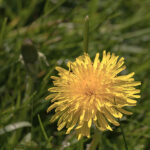Plant for a full season of pollinators

In recent years, I’ve often heard that we should leave the first round of dandelions to grow and flourish for the benefit of early food for bees. You don’t need to tell me not to mow… done! That’s an easy way to help out our little winged friends.
As the movement to promote bees increases, it’s a good idea to have a pollinator plan ready for customers interested in this topical form of conservation.

For starters, since honeybees begin foraging when temperatures approach 50°, your plan needs to begin early. Minor bulbs such as Crocus, Winter Aconite, Snowdrops and Chionodoxa are valuable food sources on those first warm spring days when little is in flower. A few weeks later the Red Maples pitch in, followed by showy spring bloomers like Forsythia, Redbud, Amelanchier and Magnolia.


Mid-to-late spring has no shortage of excellent choices, as most of our ornamentals bloom then. As things taper off into summer, Monarda, Dianthus, and Echinacea offer long blooming periods that keep the bees happy. Late summer is more challenging but Rose of Sharon and Caryopteris are two species that bloom almost into autumn.


At the tail end of the season plants like Aster, Helianthus and Sedum are excellent fall bloomers. The beginning and end of the season are the most critical, as there are fewer food sources than during the peak of the season. If you’ve incorporated annuals into your design so much the better as they will go until either killed by frost or removed.

With the buzz around saving the bees increasing, it’s a good idea to have a pollinator plan ready for your customers. Not only will they be pleased with your conservational acumen, you’ll be doing a little more to help this helpful keystone species.
Check out this order of bloom list from the Arnold Arboretum
